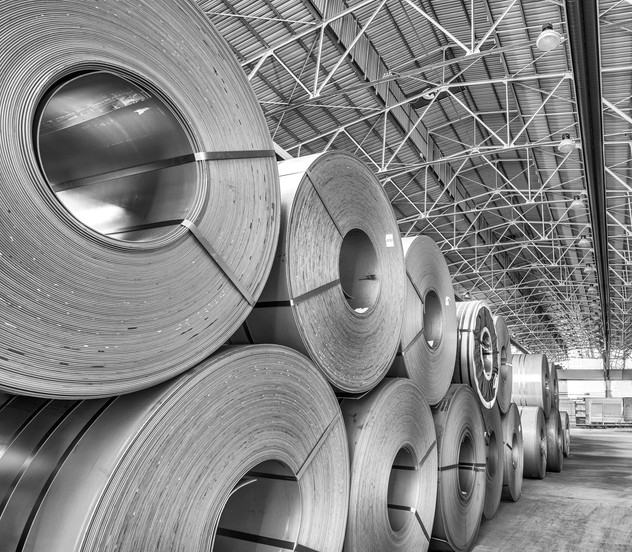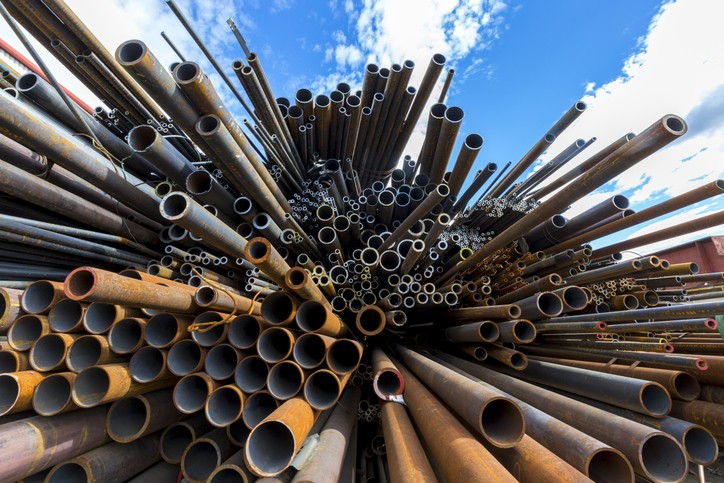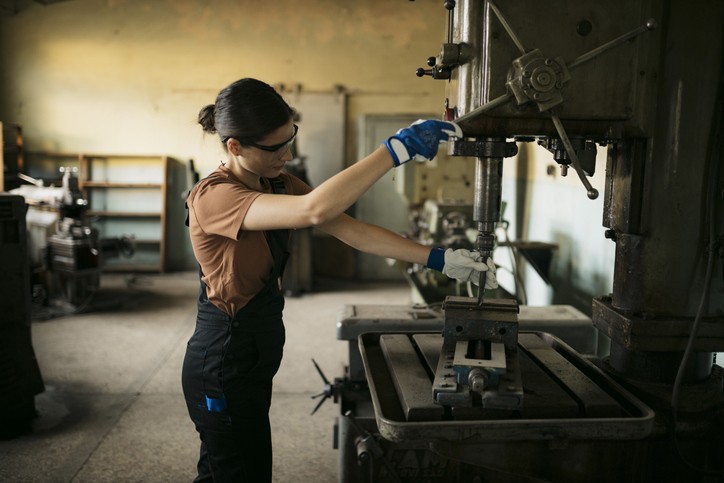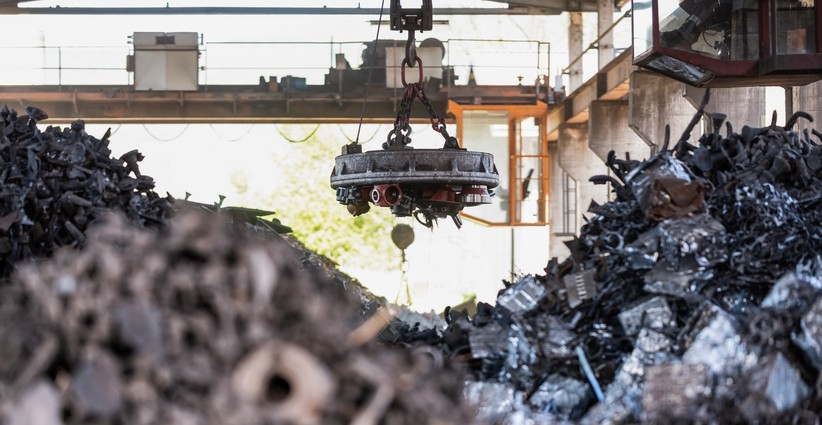
Table of Contents
The steel vs. aluminum debate remains one of the most critical decisions manufacturers and engineers face when selecting materials for their projects. Both metals offer distinct advantages that can significantly impact the success of your application, from structural integrity to cost-effectiveness.
As a precision manufacturer with extensive experience in both materials, we understand that choosing between steel and aluminum requires careful consideration of multiple factors, including strength requirements, weight constraints, and environmental conditions.
This comprehensive guide will examine the key differences between these versatile metals, helping you make an informed decision that aligns with your project specifications. We’ll explore their unique properties, cost considerations, and ideal applications to ensure your material selection optimizes both performance and value.
Understanding Steel vs. Aluminum: A Historical and Technical Overview
The choice between steel and aluminum often defines the success of manufacturing projects, with each metal offering unique characteristics that suit different applications. As experienced steel fabricators in New Jersey, we’ve worked extensively with both materials across diverse industrial projects, giving us deep insight into their properties and optimal uses.
Steel: The Cornerstone of Industrial Manufacturing
Steel, an engineered alloy of iron and carbon, has been fundamental to manufacturing since its first production in the 13th century BC. Its versatility and strength have made it indispensable in modern fabrication.
The three primary categories include:
- Carbon Steel: Offers excellent strength and durability for structural applications
- Stainless Steel: Provides superior corrosion resistance and aesthetic appeal
- Alloy Steel: Engineered with additional elements for enhanced properties
Through advanced steel fabrication processes, these varieties can be customized to meet specific project requirements, from high-temperature resistance to exceptional tensile strength.
Aluminum: The Modern Manufacturing Marvel
Discovered in the early 1800s, aluminum has revolutionized manufacturing with its unique combination of properties. Our expertise in aluminum dip brazing services has shown us firsthand how this versatile metal can transform complex projects.
Aluminum exists in several forms:
- Pure Aluminum: Offers excellent corrosion resistance and workability
- Aluminum Alloys: Provide enhanced strength while maintaining lightweight characteristics
- Specialty Grades: Engineered for specific applications like aerospace components
Comparing Material Properties
When evaluating steel vs. aluminum for your project, consider these key factors:
Strength-to-Weight Ratio
- Steel: Higher absolute strength, ideal for structural applications
- Aluminum: Superior strength-to-weight ratio, perfect for weight-sensitive projects
Corrosion Resistance
- Steel: Requires protective treatments or specific alloys like stainless steel
- Aluminum: Naturally forms a protective oxide layer
Cost Considerations
- Steel: Generally more cost-effective for large-scale projects
- Aluminum: Higher initial cost but potentially lower lifetime expenses due to reduced maintenance
This comprehensive understanding of both materials enables our team to guide clients toward the optimal choice for their specific applications, ensuring both performance and cost-effectiveness align with project goals.
Key Factors in the Steel vs. Aluminum Decision
As specialists in precision metal fabrication in New York, we understand that choosing between steel and aluminum requires careful analysis of multiple performance characteristics.
Let’s examine the crucial factors that influence this decision, particularly for demanding applications like military enclosures and specialized industrial components.
Strength and Environmental Performance
The strength difference between steel and aluminum plays a crucial role in material selection, especially in military fabrication projects where reliability is paramount.
Here’s how these metals compare:
Temperature Performance:
- Steel: Maintains consistent strength at high temperatures
- Aluminum: Excels in cold environments, with increased strength at lower temperatures
- Critical consideration for military enclosures exposed to extreme conditions
Density and Weight Considerations
The significant density difference between these metals impacts various project aspects:
Transportation and Installation:
- Steel: Higher density (approximately 7.85 g/cm³)
- Aluminum: Lower density (approximately 2.7 g/cm³)
- Impact on shipping costs and installation requirements
Structural Applications:
- Steel: Preferred for load-bearing applications requiring high structural integrity
- Aluminum: Ideal for projects where weight reduction is crucial
Corrosion Resistance and Maintenance
Protection against environmental degradation is crucial, particularly in military fabrication applications:
Natural Resistance:
- Aluminum: Forms a natural oxide layer, providing inherent corrosion resistance
- Steel: Requires additional protective treatments
Protection Methods:
- Steel: Options include galvanization, painting, or specialized coatings
- Aluminum: May need anodizing for enhanced protection in severe environments
Fabrication Considerations
The fabrication process varies significantly between these metals, affecting both design possibilities and production timelines:
Forming and Shaping:
- Aluminum: Offers greater flexibility in creating complex shapes
- Steel: Requires more robust tooling and expertise, particularly in precision metal fabrication
Manufacturing Efficiency:
- Aluminum: Generally easier to machine and form
- Steel: May require specialized equipment and techniques
The choice between steel and aluminum often comes down to balancing these factors against specific project requirements. Our experience in precision metal fabrication in New York has shown that successful material selection requires careful consideration of all these aspects, particularly when designing military enclosures or other high-performance components.
Economic and Practical Considerations in Material Selection
Cost Analysis: Steel vs. Aluminum
Material costs significantly impact project budgeting, but a comprehensive analysis must consider both initial and lifetime expenses. As experienced providers of steel laser cutting services, we’ve observed that while steel typically offers lower upfront costs, several factors influence the total investment:
Initial Investment:
- Raw Material Costs: Subject to market fluctuations based on iron availability and fuel costs
- Processing Expenses: Variable depending on required finishing and treatments
- Manufacturing Complexity: Affects overall production costs
Lifetime Value:
- Maintenance Requirements: Steel often requires periodic protective treatments
- Durability: Both materials offer excellent longevity when properly maintained
- Replacement Costs: Factor in potential future material costs
Applications Across Industries
Understanding the optimal applications for each material helps ensure project success. Our experience in manufacturing aluminum enclosures for electronics and other specialized components has shown that each material excels in specific scenarios.
Steel Applications:
- Infrastructure: Superior strength for construction projects
- Heavy Equipment: Ideal for machinery requiring durability
- EMI Shielded Enclosures: Excellent electromagnetic interference protection
Aluminum Applications:
- Aerospace: Lightweight solutions for aircraft components
- Electronics: Aluminum enclosures provide ideal protection while maintaining portability
- Transportation: Fuel efficiency through weight reduction
As one of the leading dip brazing companies, we’ve seen how material choice affects manufacturing processes and final product performance across these applications.
Sustainability and Environmental Impact
The growing emphasis on sustainable fabrication has made environmental considerations increasingly important in material selection.
Production Impact:
- Aluminum:
- Higher initial energy requirement for bauxite processing
- Advanced recycling capabilities
- Lower transportation emissions due to lighter weight
- Steel:
- Lower production energy requirements
- Extensive recycling infrastructure
- Higher transportation-related emissions
Long-term Environmental Benefits:
Both materials contribute to sustainable fabrication practices through:
- Recyclability: Both metals are infinitely recyclable
- Durability: Long service life reduces replacement frequency
- Energy Efficiency: Application-specific benefits
Transportation Efficiency:
- Aluminum’s lighter weight reduces fuel consumption in vehicles
- Steel’s durability ensures longer service life in infrastructure
- Both materials support emissions reduction goals when properly applied
Material selection should balance these environmental factors with performance requirements. For instance, aluminum enclosures might be preferred for portable electronics due to weight considerations, while steel remains optimal for static installations requiring maximum durability.
Conclusion
The steel vs. aluminum decision requires careful consideration of multiple factors, from structural requirements to long-term performance needs. Our extensive experience in custom metal fabrication NJ has shown that successful projects begin with thorough material evaluation, considering factors such as:
- Application requirements and environmental conditions
- Manufacturing complexity, including custom sheet metal bending needs
- Long-term maintenance considerations
- Budget constraints and lifecycle costs
- Production timeline and scalability
Understanding these factors, combined with the comprehensive metal fabrication process, ensures optimal material selection for your specific application. Through precision metal cutting and advanced manufacturing techniques, both steel and aluminum can be transformed to meet exacting specifications. The key lies in aligning material properties with project requirements while considering both immediate needs and long-term performance expectations.
As industry leaders with over 60 years of experience, we understand that every project presents unique challenges and opportunities. Our team of metallurgists and engineers has extensive experience working with both materials across diverse applications, ensuring that each project benefits from our comprehensive technical expertise.
Whether your project demands the robust strength of steel or the lightweight durability of aluminum, making an informed decision early in the planning process helps ensure optimal outcomes. Consider consulting material experts who can provide detailed insights based on your specific project parameters and performance requirements.
Oops! We could not locate your form.




